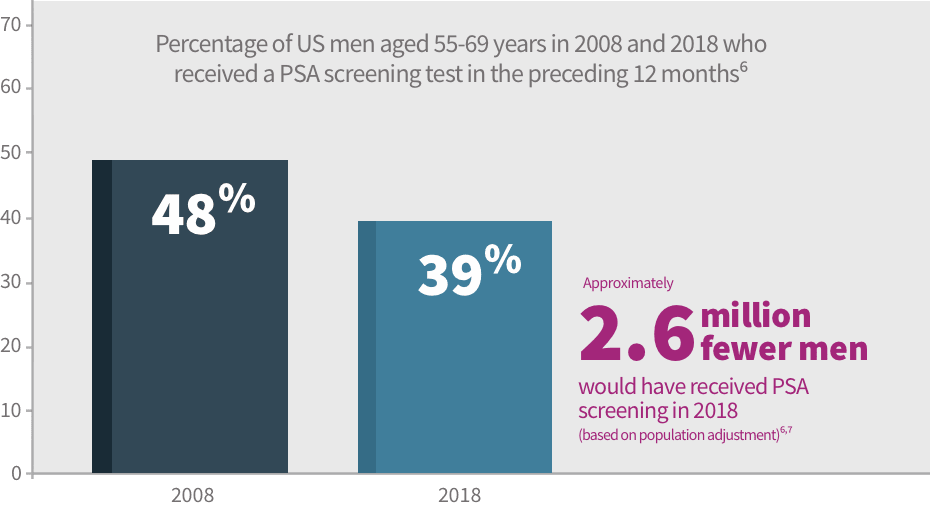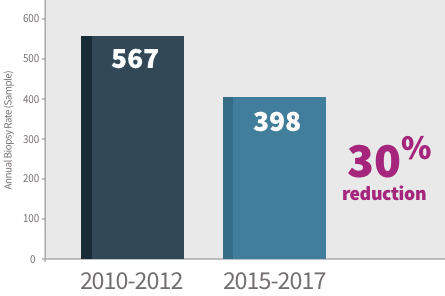Men ≥ 65 years old are ~14x more likely to develop prostate cancer than men < 65 years old (based on SEER data from 2017).4
Over the past decade, PSA screening rates have declined due in part to previous US Preventive Services Task Force (USPSTF) recommendations aimed to reduce potentially unnecessary treatment6

- In a retrospective study of data collected from 2008 to 2014 in one hospital, the largest decline in the PSA screening rate occurred in patients aged 55-69 years, when patients are most likely to develop prostate cancer (average age at diagnosis is approximately 66 years)8,9

In early 2020, one insurance report analyzing claims data estimated that PSA screening rates dramatically decreased due to the decline of in-office visits10

From February 2020 to April 2020, there was an estimated 60% decrease in PSA screening tests performed, mostly due to a decline of in-office visits because of COVID-1910














